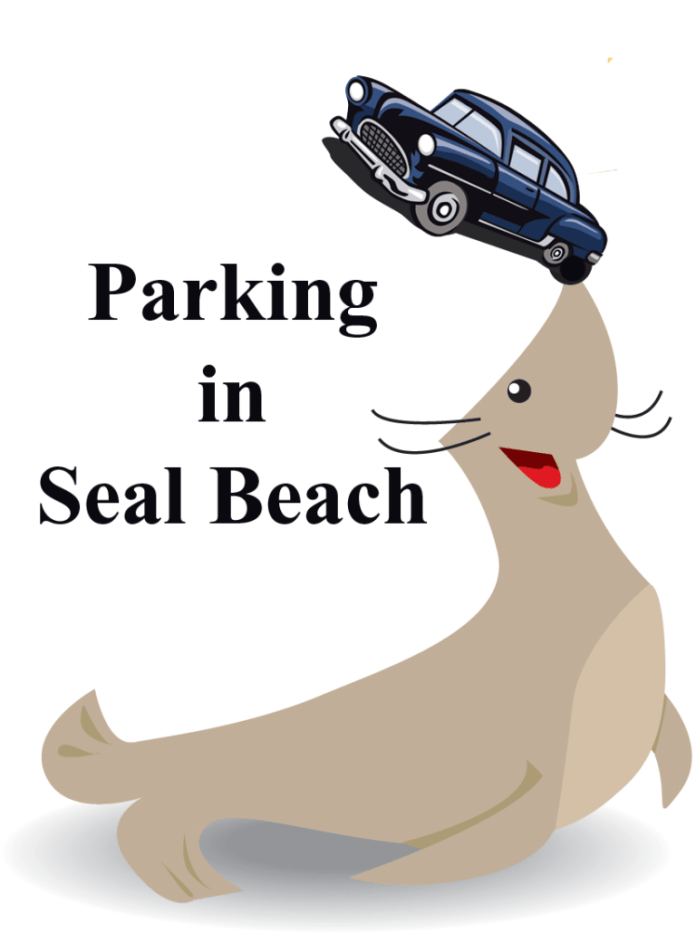California now has a “daylight parking” law that forbids parking too close to a crosswalk. The law enacted by the state legislature.
The City Council unanimously approved an update to the Seal Beach Cost Recovery Schedule to include a $56 penalty at the Monday, Feb. 10, council meeting.
During the meeting, Seal Beach Police Capt. Nick Nicholas, told the council that the new law has eliminated 300 or more parking spaces in Old Town alone. That was based on an estimate taken from a drive Capt. Nicholas took with Capt. Mike Ezroj.
This was originally a Consent Calendar item, but was pulled by District Three Councilwoman/Mayor Lisa Landau for separate consideration.
Background
“‘Daylighting’ is a term used to describe improving pedestrian and bicyclist visibility at intersections, addressing a significant factor in pedestrian/bicycle-vehicle collisions. By limiting vehicle obstructions near crosswalks, drivers gain an unobstructed view of pedestrians, particularly in areas with high foot traffic or reduced visibility,” according to the staff report prepared by SBPD Support Services Bureau Capt. Nick Nicholas.
During his verbal presentation to the council that night, Nicholas said the state law forbids parking within 20 feet of the approach side of a crosswalk (marked or unmarked) or within 15 feet of a crosswalk with a curb extension. He cited the bulb outs on Ocean Avenue as he couldn’t think of another place in Seal Beach with a curb extension.
He also said the average length of a car is 15 feet.
He told the council that the new law does not require cities to paint curbs or post signs informing the public of the new regulation.
“To align with these changes and support local enforcement efforts, staff recommends adding a $56 penalty for violations of CVC Section 22500(n)(1)(A),” Nicholas wrote.
“This amount mirrors existing penalties for parking violations within the City of Seal Beach (City), ensuring consistency across enforcement policies. Additionally, it is consistent with penalties for similar parking violations, supporting effective enforcement without imposing undue financial hardship,” Nicholas wrote.
“While revenue projections are contingent on enforcement levels and compliance rates, the $56 penalty ensures alignment with cost recovery policies,” Nicholas wrote.
Presentation
“I have been either an EMT or a policeman my entire life and two years ago when I promoted to captain, the chief said ‘Congratulations, you’re now in charge of a bunch of different administrative tasks,’ but probably my two biggest responsibilities would are animal control and parking,” Nicholas said.
“Neither of which I am particularly passionate about,” he said.
“I definitely did not go to the police academy to be in charge of a municipal parking program,” he said.
“Although I’m not passionate about parking, I am passionate about good governance so I thought I will embrace this role as best I can,” he said.
He told the council he was there to amend the cost recovery schedule to allow enforcement of Assembly Bill 413. According to Nicholas, the bill was introduced by Assemblymember Alex Lee (D-San Jose). The bill was sponsored by Safe Streets for All and the California Bicycle Coalition. Citing the bill as his source, Nicholas said California’s pedestrian fatality rate is almost 25% greater than the national average. He said about 25% of pedestrian fatalities happen near intersections. About 50% of all traffic injures occur near intersections. Nicholas said the legislature’s goal is zero traffic fatalities.
“While very noble, I don’t know how realistic that is,” Nicholas said.
Nicholas said 43 other states have similar laws.
“So it’s taken California a little while to get caught up,” he said.
“But it is well established in other states for the same reason that it was introduced in California,” he said.
He gave the council a slide presentation. One slide showed a car approaching an intersection with a parked van at the right corner. Next to that image showed that the car blocked the driver’s view of a man pushing a stroller as he approaches the crosswalk.
He showed the council another slide showing a car driving on a one-way street with parked cars on either side blocking the driver’s view of the corners of the intersection.
He said by prohibiting parking within 20 feet of the intersection, visibility is greatly increased.
He surveyed other parking managers across the state in December. He said no standard best practice emerged from the survey. He argued that none of them were getting funding to implement the new law.
What is Seal Beach doing?
“Whether it’s animal control or parking, our first priority is education,” Nicholas said.
Nicholas said he doesn’t like to call it parking enforcement. He prefers parking compliance.
“In a perfect world there’d be plenty of parking spaces available,” Nicholas said.
“Parking should be forgettable,” Nicholas said.
He said Seal Beach community service officers and police aides are multi-faceted: They do parking enforcement, book arrestees, transport people to Orange County jail, and do animal control and they work in records. “They do a bit of everything,” Nicholas said.
He described the SBPD has done some outreach online. He said the SBPD had covered the subject in the Briefing Room column in the Sun, as well as posting information on social media, as well as publishing in the Leisure World newspaper. He recently gave a presentation to the McGaugh Elementary PTA. As of Monday morning, Feb. 10, he said there were 139 comments on the SBPD’s Facebook post. Some thanked SBPD for getting the word out. Many criticized the new rule. Some believed it was a money grab. Nicholas repeated that this was a state law, not a Seal Beach rule.
“This law impacts every crosswalk in the state of California,” he said.
“It’s an unfunded state law,” Nicholas said.
He asked the council to amend the city’s cost recovery schedule to add a $56 penalty.
He said this would support consistent enforcement without causing undue financial hardship for violators.
Discussion
District One Council Member Joe Kalmick suggested posting a sign at the 20 foot mark.
Nicholas said that was not a terrible suggestion. However, he said the state doesn’t require painting or posting.
Nicholas deferred to other city departments.
Public Works Director Iris Lee said the law doesn’t necessarily require signage. She said her department would have to look further into whether additional signage is actually going to provide people with additional visibility for people to pay attention to the law.
District Five Councilman Nathan Steele asked: “Is this going to apply inside Leisure World as well?”
Nicholas said he didn’t know.
City Attorney Nick Ghirelli said those were private roads.
Steele recalled there was an agreement with the SBPD to enforce traffic laws in Leisure World.
Police Chief Michael Henderson confirmed that.
“We would have to do some research,” Henderson said.
Steele said he thinks daylight parking is already on their minds in Leisure World.
District Four Councilwoman Patty Senecal asked if the city was painting curbs, doing schools?
Henderson said the city’s status now is to communicate with the community that this is a state law that went into effect on Jan. 1.
“Right now our goal is education and outreach,” Henderson said.
He said the SBPD has not yet taken up enforcement efforts.
Senecal asked if staff would come back with recommendations on what curbs the city would or would not paint.
Lee said at that moment staff was not recommending a traffic engineering study for specific intersections.
Senecal asked if this was enforceable in College Parks east and west.
Nicholas said that if you park in violation of any part of the California Vehicle Code or the Seal Beach Municipal Code, you may be subject to citation.
Senecal asked where the $56 go. She asked if the money goes back to Sacramento or does it go to Seal Beach to recover the costs of implementing what she called an unfunded program.
“We do see some revenue from our parking enforcement efforts,” Henderson said.
“That’s not the goal here,” he said.
“The majority of our parking violations are at this cost point,” Henderson said.
Steele wanted to know what happens if the resolution doesn’t pass.
Nicholas said his concern is that the state has implemented this law. He said his fear was that the city might be exposed to liability if the city doesn’t do this and someone is hurt or killed in a crosswalk because the city didn’t do anything proactively.
District Two Councilman Ben Wong said is concern was that if Seal Beach did not adopt the parking penalty, the state see Seal Beach as not trying to enforce their state law, opening up Seal Beach to liability.
City Attorney Ghirelli said whether or not the council adopts the penalty, the daylighting law is still the law. The city council still issue tickets, but there wouldn’t be a penalty associated with that ticket that goes to the city of Seal Beach.
He said it only takes $150 and a lawyer to file a lawsuit. He said he believed the Police Department had immunity and prosecutorial discretion on who they issue tickets to. He said trying to follow the Vehicle Code as much as possible was a good idea.
District Three Councilwoman/Mayor Lisa Landau said it was important that the council pass this. She argued that passing the penalty would show Sacramento that Seal Beach was doing what they want. “So that helps us fly under the radar,” she said.
She also shared the concern about liability. “If we have it in place it shows that we’re being proactive,” Landau said.
In response to her question about enforcement, Nicholas said the SBPD’s goal is to educate the public first. “We empower our police officers and parking enforcement personnel with discretion every day sometimes as great as whether or not we take somebody’s life and sometimes as minor as whether or not we write somebody a parking ticket,” he said.
He said officers will use discretion about enforcement.
Steele said: “I don’t know how we give up 300 parking spaces for Old Town alone.”
Nicholas says the penalty allows the SBPD to address habitual offenders.
“I’m not so eager to vote yes,” Steele said.
Senecal asked whether we charge or not, we’re still in compliance with the law.
Nicholas said the law doesn’t allow parking in front of a fire hydrant. He suspected people don’t park in front of a fire hydrant because they know they might get a ticket.
Senecal said it seems that a lot of people are not aware of the law. She said she had not found anyone who knows about the law or understands it.
She suggested giving more warnings.
Kalmick argued in favor of giving the police the ability to deal with habitual offenders.
Nicholas said the word is slowly getting out there in Seal Beach.
Landau said her concern with exposure to litigation.
“I’m not that worried even if you don’t adopt the resolution tonight,” Ghirelli said.
Steele said he didn’t like unfunded mandates and this felt like another one. However, he said he would go along with this.




